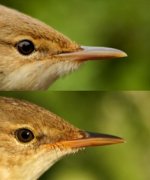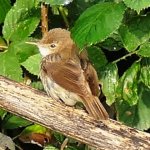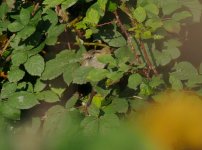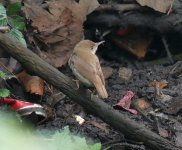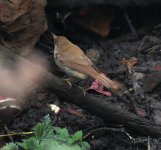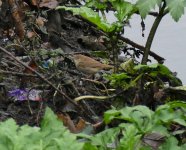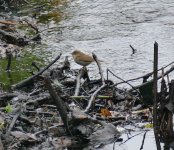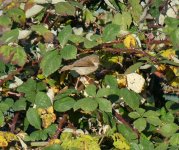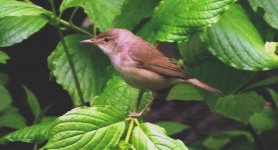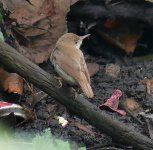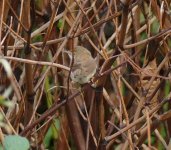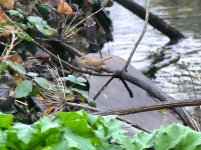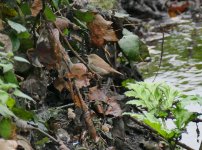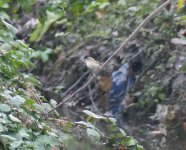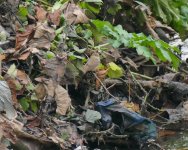Hi Ken,
Good to meet you on Monday. I've been doing some reading up on this tricky acro as well. It looks quite similar (albeit, as you would expect much more worn), to the bird at Kelynack in Cornwall in 2003, which was tentatively claimed as a Caspian Reed Warbler (Acrocephalus fuscus) by some. Pale feet, longish bill, pale underparts.
There's a discussion of Kelynack bird below, which might help:
http://www.surfbirds.com/mb/Features/kelynack-acro.html
I suspect, however, that it isn't going to be possible to produce a definitive id without some sort of molecular analysis. Here's something that I've lifted from another thread on the status of fuscus & the BBRC:
Despite reports/claims, BBRC hasn't yet accepted a record of fuscus in Britain:
Kehoe 2006. Racial identification and assessment in Britain: a report from the RIACT subcommittee. British Birds 99(12): 619-645.
http://www.bbrc.org.uk/Riact.pdf [p636]
"Reed Warbler Acrocephalus scirpaceus fuscus, 'Caspian Reed Warbler'
This eastern race is not on the British List. A number of claims have been assessed recently but none was considered conclusive, even though some contained in-hand images and full biometrics. Owing to variation within nominate scirpaceus, as well as fuscus, establishing the occurrence of the latter in Britain is thought not possible without tangible proof of origins. Any feathers lost from a suspected fuscus during ringing operations should be collected for
molecular analysis."
For anyone who's interested, the bird was still there on Monday 1st December, but very elusive.
Adam




